Yueming Lv
Frequency support Scheme based on parametrized power curve for de-loaded Wind Turbine under various wind speed
Aug 02, 2021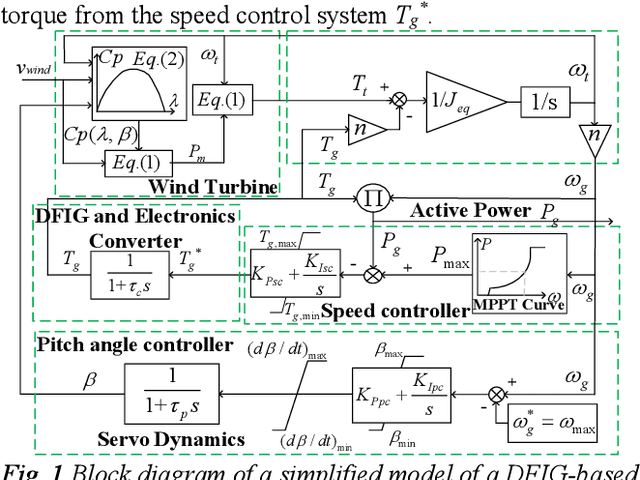
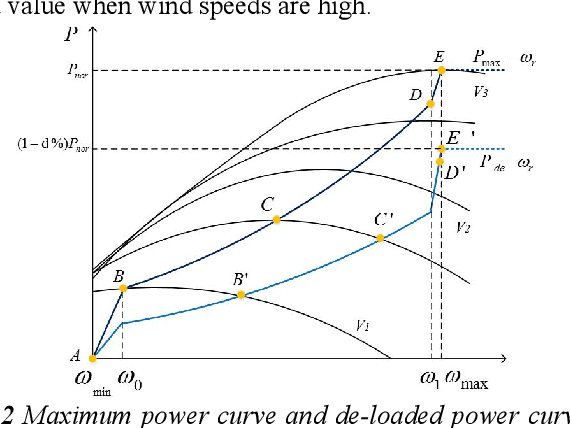
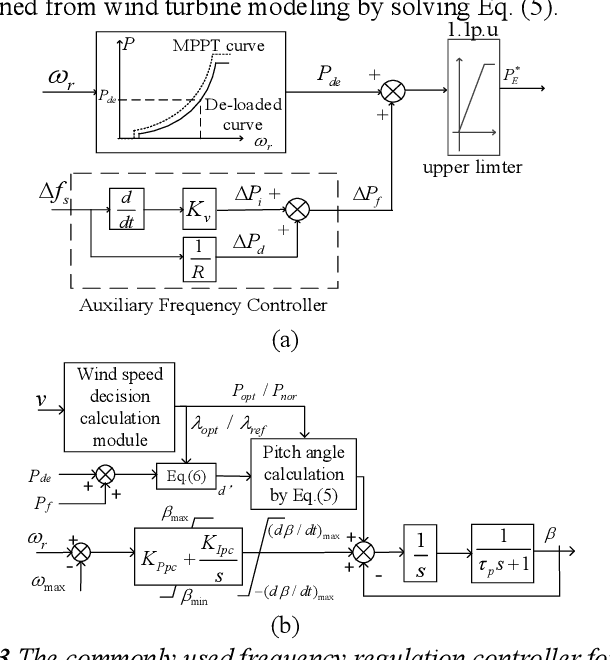
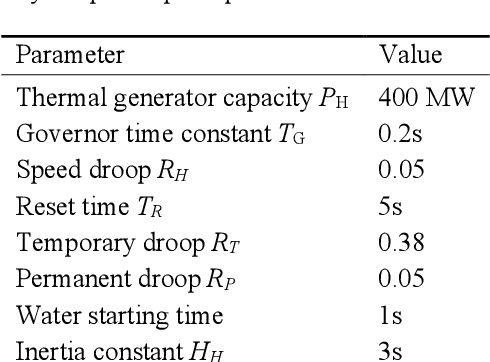
Abstract:With increased wind power penetration in modern power systems, wind plants are required to provide frequency support similar to conventional plants. However, for the existing frequency regulation scheme of wind turbines, the control gains in the auxiliary frequency controller are difficult to set because of the compromise of the frequency regulation performance and the stable operation of wind turbines, especially when the wind speed remains variable. This paper proposes a novel frequency regulation scheme (FRS) for de-loaded wind turbines. Instead of an auxiliary frequency controller, frequency support is provided by modifying the parametrized power versus rotor speed curve, including the inertia power versus rotor speed curve and the droop power versus rotor speed curve. The advantage of the proposed scheme is that it does not contain any control gains and generally adapts to different wind speeds. Further, the proposed scheme can work for the whole section of wind speed without wind speed measurement information. The compared simulation results demonstrate the scheme improves the system frequency response while ensuring the stable operation of doubly-fed induction generators (DFIGs)-based variable-speed wind turbines (VSWTs) under various wind conditions. Furthermore, the scheme prevents rotor speed overdeceleration even when the wind speed decreases during frequency regulation control.
Virtual synchronous generator of PV generation without energy storage for frequency support in autonomous microgrid
Jul 04, 2021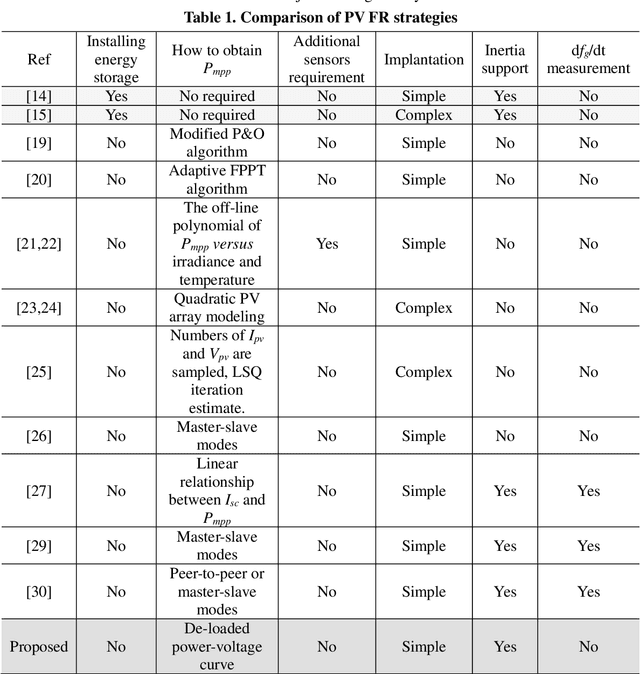
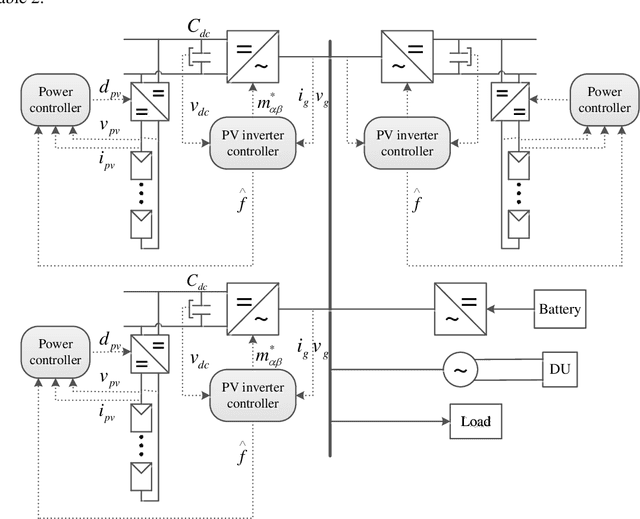

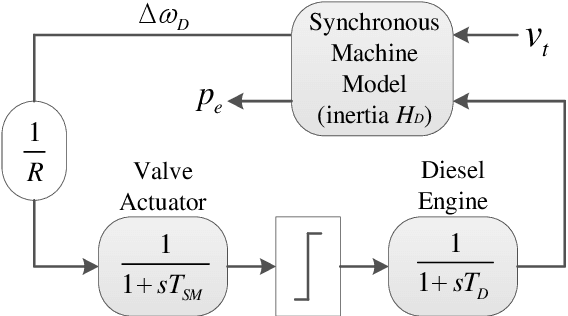
Abstract:In autonomous microgrids frequency regulation (FR) is a critical issue, especially with a high level of penetration of the photovoltaic (PV) generation. In this study, a novel virtual synchronous generator (VSG) control for PV generation was introduced to provide frequency support without energy storage. PV generation reserve a part of the active power in accordance with the pre-defined power versus voltage curve. Based on the similarities of the synchronous generator power-angle characteristic curve and the PV array characteristic curve, PV voltage Vpv can be analogized to the power angle {\delta}. An emulated governor (droop control) and the swing equation control is designed and applied to the DC-DC converter. PV voltage deviation is subsequently generated and the pre-defined power versus voltage curve is modified to provide the primary frequency and inertia support. A simulation model of an autonomous microgrid with PV, storage, and diesel generator was built. The feasibility and effectiveness of the proposed VSG strategy are examined under different operating conditions.
 Add to Chrome
Add to Chrome Add to Firefox
Add to Firefox Add to Edge
Add to Edge